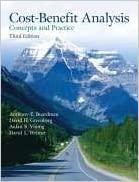Answered step by step
Verified Expert Solution
Question
1 Approved Answer
please finish all part from A to D, thank you Question 2. Revenue Management and Pricing (35 points A department store has purchased 5.000 swimsuits


please finish all part from A to D, thank you
Question 2. Revenue Management and Pricing (35 points A department store has purchased 5.000 swimsuits to be sold during the summer sales season. The season be less price sensitive and those buying later in the season are likely to be more price sensitive. The demand lasts three months, and the store manager forecasts that customers buying early in the season are likely to curves in each of the three months are forecasted to be as follows: di = 2,000 - 10 pi d2 = 2,000 - 20 p2 d; = 2,000 - 30p . For each of the following pricing policies, formulate a mathematical model that can help you solve for the optimal pricing decisions. (a) Suppose the department store aims to maximize the total revenues and decides to charge a fixed price over the entire season. How would you decide the optimal price? What is the value of the optimal Fixed price? (For this fixed price scenario, we can in fact solve for the optimal price without the need of Excel solver. Try it!) (b) Suppose the department store aims to maximize the total revenues and plans to adopt dynamic prices that vary by month. How would you decide the optimal prices? There is no need to use the excel solver to solve for the optimal prices; it is enough to just develop the model formulation. (c) Will the dynamic pricing policy in (b) achieve a higher or lower total revenue compared with the fixed pricing policy in (a)? Explain your reasoning without using the Excel solver to solve the two models. (d) Based on past experiences, the department store is aware that high price fluctuations/discounts may train the customers to become strategic so that they deliberately delay their purchase to potentially enjoy a discount. In view of this, the store manager has decided that the price in month 2 cannot be less than 90% of the price in month 1, and the price in month 3 cannot be less than 80% of the price in month 2. With the above additional requirements, how would you decide the optimal pricing policy? There is no need to use the excel solver to solve for the optimal prices; it is enough to just develop the model formulation. Question 2. Revenue Management and Pricing (35 points A department store has purchased 5.000 swimsuits to be sold during the summer sales season. The season be less price sensitive and those buying later in the season are likely to be more price sensitive. The demand lasts three months, and the store manager forecasts that customers buying early in the season are likely to curves in each of the three months are forecasted to be as follows: di = 2,000 - 10 pi d2 = 2,000 - 20 p2 d; = 2,000 - 30p . For each of the following pricing policies, formulate a mathematical model that can help you solve for the optimal pricing decisions. (a) Suppose the department store aims to maximize the total revenues and decides to charge a fixed price over the entire season. How would you decide the optimal price? What is the value of the optimal Fixed price? (For this fixed price scenario, we can in fact solve for the optimal price without the need of Excel solver. Try it!) (b) Suppose the department store aims to maximize the total revenues and plans to adopt dynamic prices that vary by month. How would you decide the optimal prices? There is no need to use the excel solver to solve for the optimal prices; it is enough to just develop the model formulation. (c) Will the dynamic pricing policy in (b) achieve a higher or lower total revenue compared with the fixed pricing policy in (a)? Explain your reasoning without using the Excel solver to solve the two models. (d) Based on past experiences, the department store is aware that high price fluctuations/discounts may train the customers to become strategic so that they deliberately delay their purchase to potentially enjoy a discount. In view of this, the store manager has decided that the price in month 2 cannot be less than 90% of the price in month 1, and the price in month 3 cannot be less than 80% of the price in month 2. With the above additional requirements, how would you decide the optimal pricing policy? There is no need to use the excel solver to solve for the optimal prices; it is enough to just develop the model formulationStep by Step Solution
There are 3 Steps involved in it
Step: 1

Get Instant Access to Expert-Tailored Solutions
See step-by-step solutions with expert insights and AI powered tools for academic success
Step: 2

Step: 3

Ace Your Homework with AI
Get the answers you need in no time with our AI-driven, step-by-step assistance
Get Started


